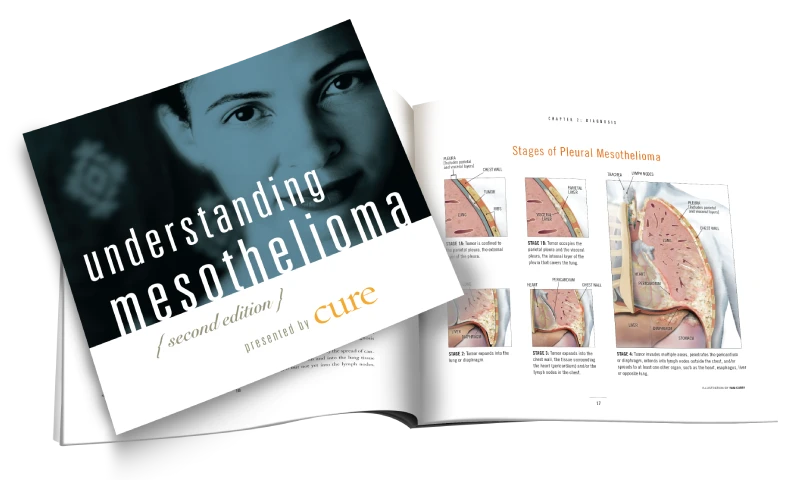Home › Mesothelioma › Causes
Causes of Mesothelioma
The only known cause of mesothelioma is asbestos exposure. The people most affected by asbestos are those exposed to it regularly, often at jobs where they work directly with or around asbestos-containing materials. Due to secondary exposure, the family members of these workers are also at risk of developing asbestos-related diseases like mesothelioma.
Last Updated:
- May 16, 2025
Asbestos Exposure Is the Primary Cause of Mesothelioma
The primary and only confirmed cause of mesothelioma is asbestos exposure. Millions of workers have been exposed to asbestos since the 1940s, according to the National Cancer Institute.[1]
Virtually everyone is exposed to asbestos at some point in life, as low levels of asbestos are present in the air, water, and soil. However, most people will not develop an illness from this exposure.
What Is Asbestos?
Asbestos fibers are naturally resistant to heat, fire, chemicals, and electricity. Thus, asbestos was commonly used in many industries from the 1930s into the 1980s, especially during its peak in World War II. The government started regulating its use in the late 20th century.
How Asbestos Causes Mesothelioma

This damage can lead to mesothelioma after 30 to 60 years from exposure.
6 of 6Asbestos becomes harmful when the materials containing it are disturbed or manipulated in a way that creates dust. The visible dust contains microscopic asbestos fibers. Those working in the area can inhale and ingest the fibers, which can become lodged in the tissue surrounding bodily organs, such as the lungs, heart, and abdomen.
According to the American Cancer Society, larger asbestos fibers that become stuck in the body can damage a person at the genetic level.[2] Larger fibers can get inside the cells that line the lungs, causing problems when the cells divide and reproduce. Asbestos fibers can trigger inflammation and other stress responses in the body, which can further damage cells, induce genetic changes, and contribute to the development of mesothelioma over time.
How Much Asbestos Can Cause Mesothelioma
The exact amount of asbestos exposure needed to cause mesothelioma is not precisely known. However, it is clear there is no safe level of asbestos exposure. Even minimal asbestos exposure can cause mesothelioma.
Research on the duration of asbestos exposure and the risk of mesothelioma development has produced mixed results. However, some studies have reported no difference in the incidence of mesothelioma between those with long exposure times and those with shorter exposure. Even low levels of environmental asbestos exposure can increase the risk of mesothelioma.
Who Is Most at Risk for Mesothelioma?
Tradespeople are at high risk for mesothelioma through occupational asbestos exposure. However, the family members of these workers are also at risk due to secondary exposure. In such cases, the workers bring home asbestos fibers on their clothes, skin, and hair, exposing their families to asbestos.
Occupational Asbestos Exposure
Although the chances of developing mesothelioma in the U.S. general population is less than 1 percent, the risk skyrockets to 8 to 13 percent for tradespeople working with or around asbestos-containing products.
Some of the highest-risk occupations include the following:
- Insulation workers
- Oil refinery workers
- Power plant workers
- Chemical plant workers
- Automobile mechanics
- Steel mill workers
- Paper mill workers
- Shipyard and shipbuilding workers
- Military veterans
Occupational Exposure Story
“We didn't know it was that dangerous.”
I was exposed to asbestos while cutting out insulation to put in the pipe because a lot of these oil refineries were constantly coming down and we had flanges to take apart. We had all sorts of pipe fitting and anytime we had to cut into a line, we knocked off the asbestos insulation
Secondary Asbestos Exposure
While occupational exposure is the most common source of asbestos exposure, it is not always the culprit behind mesothelioma cases. Secondary asbestos exposure can occur when a family member or other person is exposed to asbestos via a person who works with or around asbestos. Normally, this occurs when an exposed worker brings asbestos home on their clothing after working at a job site where asbestos products are present.
Did You Know?
Around 35 percent of mesothelioma cases have a secondary asbestos exposure component.
Secondary Exposure Story
"He did not know anything about asbestos on his clothes."
My dad worked in the industrial field his whole career. He worked in paper mills and in plants. He would bring home asbestos on his work clothes. It was a secondary exposure to me as I was young growing up.
Risk Factors for Mesothelioma
Several risk factors can determine a person’s likelihood of developing mesothelioma, including gender, age, geography, and more. The development of mesothelioma is more common among men, and the likelihood of a diagnosis increases with age. Mesothelioma is also more prevalent in geographic regions where oil and gas refineries, chemical plants, manufacturing plants, shipyards, and other industrial sites are present. For example, U.S. Navy veterans who served aboard ships are more likely to develop mesothelioma than other branches of the military and civilians.
The major risk factors for mesothelioma include the following:
- Gender – Men are more likely than women to develop mesothelioma because more men have historically worked in industries where occupational asbestos exposure was prevalent.
- Age – Because it can take 20-60 years for mesothelioma to develop after the first exposure to asbestos, it is more likely to affect older adults. According to The American Cancer Society, it is rare in people under 45.[3]
- Geography – Mesothelioma is more prevalent in geographic regions with a large number of oil and gas refineries, chemical plants, manufacturing plants, shipyards, and other industrial sites.
Does Smoking Impact Mesothelioma Risk?
Smoking has no impact on the development of mesothelioma. However, smoking does increase the risk of lung cancer, which can also result from asbestos exposure. Because of this, people with a history of both smoking and asbestos exposure have an elevated risk of developing lung cancer—about 60 times higher than nonsmokers with no asbestos exposure.
Free Mesothelioma Book
If you or a loved one has been diagnosed with mesothelioma or you believe you may be at risk of developing it, it is crucial to educate yourself on the disease.
Understanding Mesothelioma is an informational reference that provides an overview of mesothelioma, including its causes, diagnosis, new treatment options, and survivors’ stories. The book was created to educate mesothelioma patients and their families about the cancer. It is available at no cost to patients and caregivers courtesy of our sponsor, Baron & Budd, P.C.

Order Your Free Mesothelioma Book

Content Reviewed by
Todd Kale
Todd Kale meets with mesothelioma patients and their families across Louisiana to investigate their asbestos exposure, providing compassionate support and guidance during a difficult time.
Cited Source
- National Cancer Institute. (n.d.). Asbestos exposure and cancer risk fact sheet. Fact Sheet – NCI. https://www.cancer.gov/about-cancer/causes-prevention/risk/substances/asbestos/asbestos-fact-sheet
- What causes malignant mesothelioma? American Cancer Society. (n.d.). https://www.cancer.org/cancer/types/malignant-mesothelioma/causes-risks-prevention/what-causes.html
- Risk factors for malignant mesothelioma. American Cancer Society. (n.d.-a). https://www.cancer.org/cancer/types/malignant-mesothelioma/causes-risks-prevention/risk-factors.html


